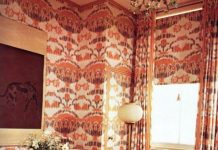Positioning Plants For Maximum Effect – The standard advice for getting the best visual effect from your plants is to study their future home BEFORE making your purchase. They may be required for general decoration – a bright splash of color or a medley of green foliage to liven up a dull room. Once you have brought them home you should move the pots around the room so as to get the most pleasing effect.
In other cases the choice is more limited – the plants are required to do a specific job, such as covering an empty fireplace or serving as a divider between parts of a room. Here the final position is already fixed, so you should look carefully at the background before making your decision.
Much of this is a counsel of perfection. At least 50 % of all indoor plants are impulse purchases – the plant is bought solely on the basis of catching your eye in the shop and the instructions are then read when the pot arrives home. In this case you must find a spot in the house which will give the plant the light and heat it needs, and you should consider the background and lighting to enhance its beauty.

Background for your indoor plants
– For most plants the best background is a non-patterned, pale pastel color. This is especially true for all-green foliage plants and for brightly colored flowers.
– Small leaves are often lost against an intricately-patterned background. Move such plants in front of a plain wall – use large-leaves types against patterned surfaces.

– Heavily variegated leaves and plants bearing masses of pale blooms may look insipid when set against a pale background. A dark surface is visually more effective.
– For a bold effect aim for contrasts in color and shapes. A background with a strongly perpendicular look can be improved by placing a spreading plant in front of it.
Influence of lighting
For life-giving illumination the plants must rely on daylight or fluorescent lighting. For display purposes the light of an ordinary bulb directed on to the foliage or flowers will greatly enhance the appearance of a specimen plant in the evening. The best type of bulb to use is a spotlight or floodlight, but overheating can be a problem. Switch on the light and place your hand just above the leaves nearest the bulb. If you can feel the warmth then the plant is too close.
Spotlighting. A light or lights which are above the plant or plants. There are two benefits: plants in groups are brought into a unified whole and the details of individual plants are heightened.

Uplighting. A light or lights which are set at ground level in front of the plant or plants. Leaves are illuminated, but the main purpose is to cast interesting shadows against the wall. Move the light to seek th most dramatic effect.
Backlighting. A light or lights which are set at ground level behind the plant or plants. The basic purpose is to turn the plant into a silhouette. This is not a technique for ordinary displays – you need space and large plants.



























